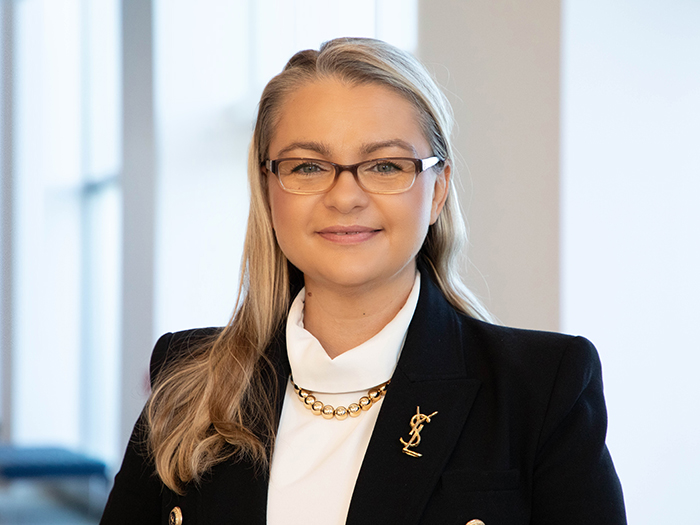Reputational Risk
Here’s Why Putting a Price on Reputational Damage Is So Hard — But Totally Worth It

An oil spill, a plane crash, a tax scandal, a sexual harassment lawsuit. In the age of social media, negative brand events are amplified, and reputations are damaged in seconds, sometimes irreparably.
The financial repercussions can be severe, from lost revenues to a tumbling stock price. “Wall Street will forgive you for an uninsured earthquake loss or a terrorism event, but it will not forgive you for operational failures that affect your reputation,” said John Kerns, leader of Beecher Carlson’s national financial services practice.
Even with internal and external social media policies in place, controlling the online fallout from a damaging incident is very difficult. Furthermore, the rise of movements such as #MeToo have highlighted just how quickly the actions of one individual can prompt a ‘trial by media,’ sullying the name of their employers or even the company they own.
“Litigation can take years, but your company can go out of business in weeks, maybe days,” said Robert Yellen, D&O and fiduciary liability insurance product leader, FINEX North America, Willis Towers Watson.
“Black swan” events such as these, he said, are much harder for risk managers to anticipate and plan for than a product recall event, for example. “These are crises that don’t necessarily reflect on the core business but can still have a huge reputational impact.”
Yet despite the growing threat reputational risk poses to organizations, quantifying and mitigating the risk itself continues to challenge risk managers and insurers.
“When a brand has fallen short of its values or lost the trust of its customers, it sees a tangible fallout, whether that is loss of sales, partners, sponsors, endorsers or investors,” said Carol Fox, vice president of strategic initiatives at RIMS, before adding: “Reputational risk is multi-dimensional, making it hard to understand and articulate.”
Quantifying Reputation Risk
According to the Reputation Institute — which monitors and ranks the reputation of 7,000 major organizations globally — intangible factors account for 81 percent of a public company’s market value, and improvement or deterioration in a company’s reputation has a tangible impact on performance.
“Since 2006, a strong reputation yields 2.5 times better stock performance when compared to the overall market. And a 1-point increase in reputation yields a 2.6 percent increase in market cap,” the Institute said. It added, also claiming that when a reputation improves from ‘average’ to ‘excellent’ in rating, there’s a 2.7-times increase in purchase intent.
According to Dr. Nir Kossovsky, CEO, Steel City Re, which brokers dedicated reputational risk insurance solutions in partnership with Lloyd’s syndicate Tokio Kiln, reputation can be defined as an expectation of behavior. “Its value is measurable, and therefore it is manageable and insurable,” he said.
“The greatest challenge for the industry in quantifying reputational risk is the prevalence of simplified notions of the peril. Like fraud risk, reputation risk is a complex peril that has multiple contributing factors, and its going-forward costs are far greater than losses that are immediately appreciated.”
Only a handful of insurers offer dedicated reputation products and sources agree there is no consistency between the existing policies.
“Wall Street will forgive you for an uninsured earthquake loss or a terrorism event, but it will not forgive you for operational failures that affect your reputation.” — John Kerns, financial practice leader, Beecher Carlson
While Steel City Re, for example, offers parametric policies, which pay a pre-agreed sum upon specific triggers linked to reputation metrics being met, AIG’s product is primarily designed to assist with crisis management (though it did recently update the policy to include an income protection feature).
But the biggest criticism of standalone reputational damage insurance is that there simply is not enough capacity to offer meaningful indemnity against lost revenues or a stock crash.
“The truth is, insurance can’t do much to solve a company’s reputational crisis — even if you took all the capacity in the market and applied it to a bad loss, it would barely make a dent,” said Yellen.
Cover of around $5 million may help a small company survive an incident, but even then, he added, there is unlikely to be budget allocated to procure standalone reputational damage cover, and telling the board that insurance is in place may create unrealistic expectations over how well the company is financially covered.
“A reputation event could dent a major company’s market capitalization by billions of dollars, and insurers can’t offer anywhere near those kinds of limits,” added Kerns.
Through Steel City Re, larger limits may be covered through capital instruments and additional risk financing structured through a captive insurer, allowing access to reinsurance markets.
Slow on the Uptake
However, uptake of standalone reputational risk insurance has so far been slow and awareness of such cover even being available is relatively low.
“I’m not aware of any Fortune 100 company that has purchased a huge reputational risk program, and we work with many,” said Kerns, who advises those that do to seek extended periods of indemnity just as they would for a cyber policy. “The challenge is getting a carrier to agree that it’s not just the short period of time around a trigger event that they are covering, but how that event affects the company over a 12-month period.”
Kerns feels that going forward, reputational risk is more likely to be addressed as a component within broad aggregated policies rather than on its own. “Conversations around this kind of comprehensive solution are happening more and more — in fact, we very recently placed one — and reputational risk is part of that conversation,” he noted.
Kerns does believe, however, that more underwriters will start addressing reputational risk given its rising importance to C-suites.
“Insurers will continue to offer innovations, but I don’t see insurance for reputational damage becoming mainstream anytime soon,” said Yellen. “The demand is there, but there just isn’t enough [capacity] to be a compelling solution.”
Damage Limitation
With meaningful indemnity seemingly a pipe dream, insurers may be able to add most value by providing pre- and post-crisis support solutions, such as providing experts to guide PR and social media strategies. After all, said Kerns, “it’s what you do to manage a crisis after it hits that keeps costs down.”
Fox advises companies to identify factors that can affect their reputation and to monitor them, from customer or employee satisfaction surveys to tracking social media coverage. “Not all reputation dimensions will affect every organization, however, it is essential to work through potential scenarios and prepare a thought-out response to a crisis event in advance,” she said.
This process calls for collaboration across business silos, said Yellen, as well as potentially hiring brand management consultants, which can help companies identify stakeholders and key messages well ahead of a Black Swan event.
“Communication in a crisis is critical. When there are thousands, perhaps hundreds of thousands, of people commenting about you on social media, if you’re not defining the message someone else likely will.”
Arguably the best defense is to make building a positive reputation a central and ongoing objective. Indeed, Fox believes reputation should not be looked at just as a risk but also as an asset.
“Effectively managing reputational risk is a criterion for success. Organizations need to both protect their reputation and create reputational value,” she said.
After all, companies that build up strong reputational capital are far more likely to recover from a damaging incident than those that are already poorly or even neutrally regarded; according to Reputation Institute, 63 percent of people give companies with excellent reputations the benefit of the doubt in times of crisis.
“These same companies are also 3.2-times more likely to be trusted to manage a crisis than companies with average reputation scores,” it said. “The result? Reputation acts as an insurance policy against disaster.” &












